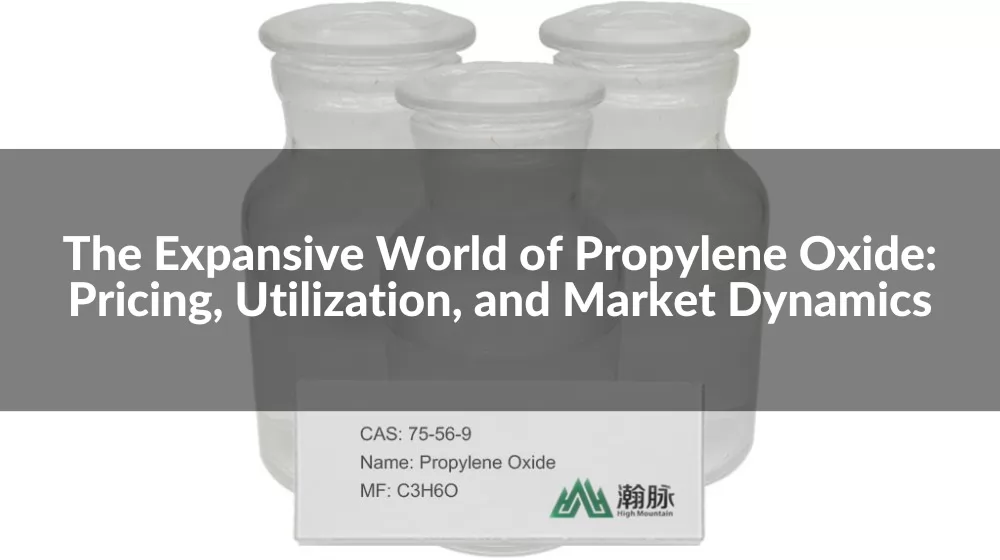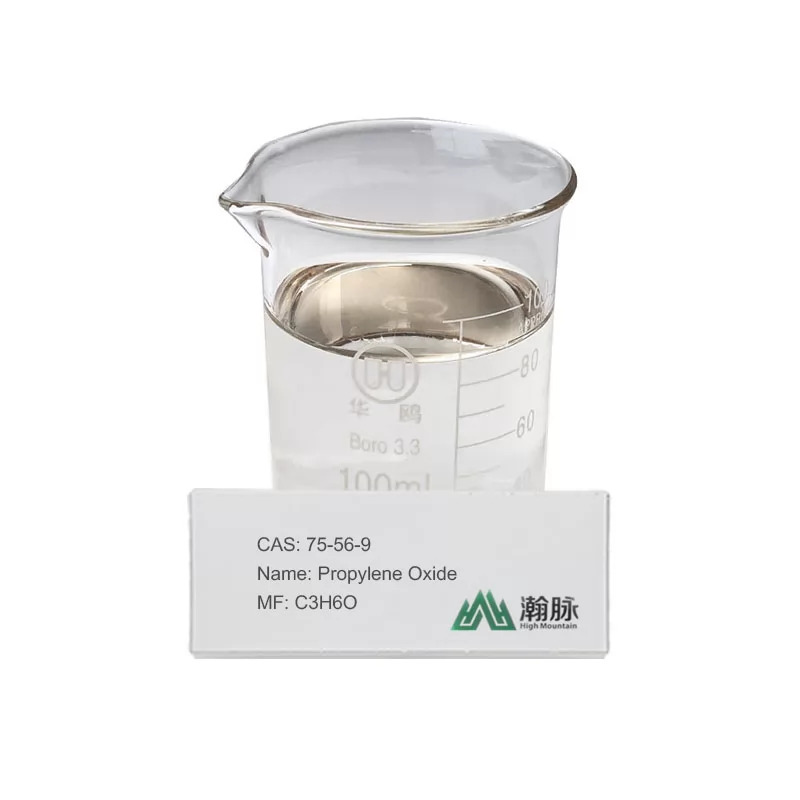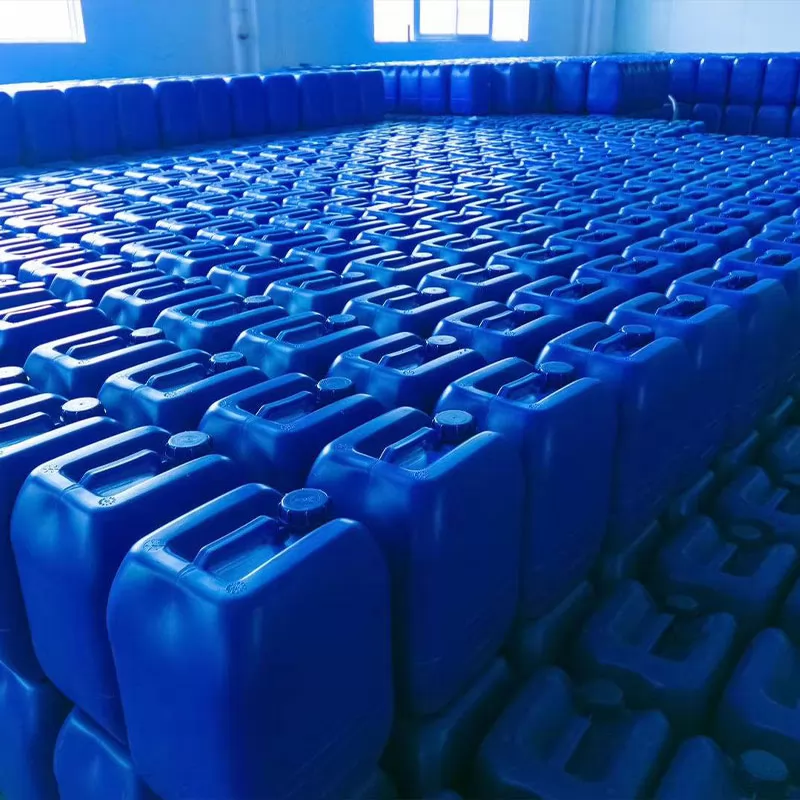

Delve into the comprehensive guide on Propylene Oxide, a vital chemical compound that serves as a cornerstone for numerous industrial applications. Explore its pricing dynamics, diverse utilizations, market availability, and the environmental and safety considerations essential for handling this versatile chemical. Embark on an informative journey that caters to both industry veterans and newcomers alike, unveiling the myriad facets of Propylene Oxide.
Propylene Oxide (PO) is a critical chemical compound with a plethora of applications across various industries. Its inception traces back to the early 20th century, where its potential in creating other valuable chemicals was quickly realized. Over time, its production processes have been refined, and its accessibility in the market has witnessed a considerable upsurge. The global demand for Propylene Oxide stands as a testament to its indispensable role in modern industrial operations.
The journey of PO begins with its creation, which is primarily done through three methods: the chlorohydrin process, the styrene monomer (SM) process, and the hydrogen peroxide (HP) process. Each of these processes have their own set of advantages, with certain considerations regarding cost, efficiency, and environmental impact. The selection of the production method is often dictated by the specifics of the intended application and the geographic location of the manufacturing facilities.
The price of Propylene Oxide is subject to fluctuations due to various factors such as raw material costs, production costs, and market demand. Despite these variations, the strategic importance of PO remains intact owing to its wide-ranging uses. It serves as a fundamental building block in the production of polyurethane plastics, which find applications in furniture, automotive parts, insulation materials, and more. Additionally, Propylene Oxide is utilized in the creation of propylene glycol, a compound essential in the manufacture of resins, solvents, and food additives. Its versatility extends to being a significant component in the formulation of detergents, surfactants, and de-icing compounds.
The sale of Propylene Oxide is a robust market with a diverse clientele. Manufacturers, suppliers, and end-users form a complex network that thrives on the continuous supply and demand of PO. With an eye towards sustainability, recent advancements in production technology aim to minimize environmental impact while maintaining, or even enhancing, the efficiency and quality of Propylene Oxide production. As we delve deeper into the subsequent chapters, the integral role of PO in modern industry will be further elucidated along with a comprehensive analysis of its market dynamics, applications, and safety considerations concerning its use in food products.
Propylene Oxide (PO) is a cornerstone in the edifice of modern industrial processes. Its significance emanates from its versatile nature, which renders it an essential component in the manufacture of a wide array of products that are integral to our daily lives. The expansive use of PO underscores its relevance and the dependency of various industrial sectors on it.
A prime manifestation of Propylene Oxide’s importance is seen in the realm of polyurethane production. Polyurethanes are ubiquitous in contemporary settings, forming the core of numerous products like foams, coatings, adhesives, sealants, and elastomers. The transformative journey from PO to polyurethane underscores the chemical’s role as a vital intermediary in the synthesis of complex materials. This transformation is emblematic of the broader industrial reliance on PO.
Beyond polyurethanes, Propylene Oxide is pivotal in the synthesis of propylene glycol, which in turn, finds extensive application in the formulation of resins, solvents, and food additives. Moreover, its utilization extends to the pharmaceutical industry where it's employed in the creation of various formulations, enhancing the efficacy and stability of numerous medications.
The global market dynamics of Propylene Oxide reflect its industrial significance. The price trajectory of PO is often seen as a barometer for measuring the health of the broader chemical industry. Its demand and supply curves are closely monitored by stakeholders to glean insights into market trends and to formulate strategic responses to the ever-evolving industrial landscape.
Furthermore, the continuous innovation in Propylene Oxide production techniques is a testament to the industry's commitment to enhancing efficiency, reducing environmental footprint, and meeting the burgeoning demand. The exploration of sustainable production methods is a focal point of research and development efforts, aiming to ensure a greener, more efficient utilization of resources.

The pricing dynamics of Propylene Oxide (PO) have been largely influenced by a myriad of factors over the years. A notable driver is the cost of raw materials, which has a direct bearing on the price of PO. The equilibrium between global supply and demand has also played a pivotal role in shaping the historical price trends of PO, with a tight supply often leading to a surge in prices.
The price of raw materials such as propylene and the costs associated with its procurement significantly impact the pricing of Propylene Oxide. A spike in raw material prices usually translates to higher PO prices, thus affecting the cost dynamics throughout the supply chain.
The global demand for PO tends to mirror the economic trends, where a booming economy can spur demand, pushing prices upwards. Conversely, a sluggish economy may lead to a dip in demand and possibly a softening of prices.
Various factors come into play when determining the price of Propylene Oxide, with production costs, geopolitical tensions, and regulatory changes being among the most impactful.
The costs incurred in the production process, including energy, labor, and technology, significantly affect the pricing of PO. Efficient production techniques that lower costs can help in stabilizing or reducing the price of PO.
Geopolitical tensions can disrupt the supply chain, thereby affecting the availability and cost of raw materials which in turn impacts the price of PO.
Regulatory changes pertaining to environmental standards or trade policies can alter the production costs and market dynamics, thereby influencing the price of PO.
The price of Propylene Oxide can vary significantly from one region to another due to differences in local production capabilities, import/export dynamics, and regional demand.
Price disparities are often observed across these regions owing to the variance in production costs, availability of raw materials, and market demand.
Local production capabilities and the dynamics of import and export significantly influence the regional price of PO. Regions with robust local production may enjoy competitive prices compared to those heavily reliant on imports.
Forecasting the price of Propylene Oxide involves analyzing various market and economic indicators. Industry experts often delve into an extensive analysis to provide a semblance of direction regarding future price trends.
Expert forecasts are based on an analysis of market dynamics, production costs, and geopolitical scenarios. These forecasts provide invaluable insights for stakeholders to strategize accordingly.
Potential market disruptors such as innovative production techniques, new regulatory frameworks, or geopolitical upheavals can significantly alter the price predictions, necessitating a vigilant monitoring of the market landscape.
Propylene Oxide (PO) showcases its versatility through a plethora of industrial applications. Its journey in serving various industries has been transformative, marking its footprint as a fundamental building block in the synthesis of several industrial-grade compounds. This section delves into the pivotal role of PO in the realms of polyurethane and propylene glycol production, underlining its significance in steering the wheels of modern industries.
Polyurethane, a polymer of immense industrial relevance, owes its genesis to the chemical attributes of Propylene Oxide. The process of creating polyurethane involves a meticulous interplay of chemical reactions, with PO being at the heart of it. The resultant polyurethane finds its usage across an expansive range of applications including but not limited to foam production for upholstery, insulation materials, coatings, adhesives, and elastomers. The array of products derived from polyurethane stands as a testament to the intrinsic value of Propylene Oxide in catalyzing industrial processes.
Transitioning from Propylene Oxide to Propylene Glycol is a chemical expedition that emphasizes the resourcefulness of PO. Propylene Glycol, a compound of significant industrial merit, finds its applications sprawling across several domains. From acting as a solvent in pharmaceuticals to playing a role in food additives, the utility of Propylene Glycol is vast. The seamless transition from PO to Propylene Glycol and further into an array of products underscores the industrial importance of Propylene Oxide.
The voyage of Propylene Oxide doesn’t halt at industrial applications; it extends its prowess into the food industry, marking a substantial impact. Its role as a food additive and the stringent safety frameworks governing its usage is a narrative of ensuring food safety while leveraging chemical innovation. This section sheds light on the aspects of PO’s involvement in the food industry, elucidating its roles and the regulatory landscape overseeing its usage.
In the vast domain of food processing, Propylene Oxide and its derivatives come into play in a variety of roles. They serve as emulsifiers, helping maintain a consistent texture in food products. Additionally, they act as stabilizers, ensuring the longevity and quality of food items. The contribution of PO in enhancing the texture and consistency of food products is a fine example of chemistry serving daily human needs.
The journey of PO from production facilities to being a constituent of food products is meticulously overseen by a robust framework of safety regulations. These regulations ensure that the levels of PO and its derivatives in food products are within safe limits, thereby ensuring consumer safety. The compliance with these regulations is non-negotiable and is rigorously enforced to uphold public health standards.
Propylene Oxide’s relevance transcends into the realms of medicine and pharmaceuticals, showcasing its broad-spectrum utility. Its involvement in sterilization processes and as an intermediate in pharmaceutical production underscores its multifaceted nature. This section explores the facets of PO’s applications in medical and pharmaceutical domains, underlining its critical role in promoting health and well-being.
Sterilization is a cornerstone in medical settings, and Propylene Oxide rises to the occasion as a reliable sterilizing agent. Its efficacy in eliminating microbial entities makes it a preferred choice for sterilizing medical equipment and supplies. The role of PO in curbing infection risks is a narrative of chemical innovation serving critical healthcare needs.
The pharmaceutical industry leverages the chemical potential of Propylene Oxide in the synthesis of various medicinal compounds. As an intermediate, PO facilitates the creation of pharmaceuticals that are instrumental in treating a myriad of health conditions. Its contribution in bridging the gap from chemical reactions to life-saving medicines is a hallmark of its importance.
The narrative of Propylene Oxide’s utility is expansive, reaching out to several other significant sectors like automotive and construction. Each of these sectors leverages the chemical attributes of PO to enhance the quality, safety, and efficiency of their offerings. This section navigates through the avenues of PO’s applications in these sectors, painting a picture of its widespread utility.
The automotive sector rides on the wheels of innovation, and Propylene Oxide plays a part in fueling this journey. PO-based polyurethanes find their way into the production of car seats, dashboards, and energy-absorbing foams, significantly enhancing the comfort, aesthetics, and safety of vehicles. The role of PO in driving the automotive industry towards better safety and comfort standards is a reflection of its multifaceted utility.
The blueprint of modern construction practices has a significant imprint of Propylene Oxide. Its involvement in the production of insulating foams, sealants, and other construction materials is critical in enhancing the structural integrity, energy efficiency, and durability of buildings. The narrative of PO serving the construction sector underlines its broad-spectrum applicability and its role in building the modern world.

The market landscape of Propylene Oxide (PO) is adorned with a number of leading producers and distributors who have cemented their positions through years of quality production, expansive distribution networks, and adherence to international standards. This segment sheds light on the market share dynamics, and the regional production capabilities which play a significant role in the global availability of Propylene Oxide.
The market share analysis provides a lens into the competitive landscape of PO production and distribution. Leading producers often have a significant market share, reflecting their production capabilities, distribution networks, and the trust bestowed upon them by the industry stakeholders. Analyzing market share dynamics provides insights into the industry leaders and their potential impact on the market trends.
The regional production capabilities illustrate the geographical distribution of PO production. Regions with well-established chemical industries often house major producers of Propylene Oxide. The regional production capabilities significantly influence the global supply chain, pricing, and availability of PO.
The procurement of Propylene Oxide is facilitated through various channels, each catering to the diverse needs of the buyers. Whether it's through online platforms or direct purchases from manufacturers, the avenues for procuring PO are tailored to ensure a smooth purchasing experience. This section explores the various platforms through which prospective buyers can acquire Propylene Oxide.
The digital age has ushered in the convenience of online platforms where buyers can browse, compare, and purchase Propylene Oxide from the comfort of their premises. These platforms provide a plethora of information including pricing, quality certifications, and supplier reviews, thereby aiding informed purchasing decisions.
For those seeking a more hands-on approach, direct purchases from manufacturers provide an avenue for personalized transactions. This route often enables buyers to negotiate pricing, verify quality certifications, and establish long-term supply agreements.
Quality assurance is the bedrock of trust in the Propylene Oxide market. Adherence to international standards and certifications by reputable bodies are indicative of the quality of PO being offered in the market. This section delves into the international standards and certification bodies that govern the quality of Propylene Oxide.
International standards for Propylene Oxide dictate the quality benchmarks that need to be met by the producers. These standards encompass various aspects including purity, safety, and environmental impact, ensuring that the PO in the market meets the requisite quality and safety benchmarks.
Certification bodies play a crucial role in upholding the quality standards in the PO market. By conducting rigorous assessments and audits, these bodies certify the compliance of producers with the established international standards, thereby providing a seal of trust and assurance to the buyers.
The handling and storage of Propylene Oxide (PO) necessitate stringent safety protocols to mitigate the risks associated with its reactive nature. From the moment PO is produced to its storage and eventual use, a regimented safety framework is imperative to ensure the well-being of individuals and the environment. This section delineates the safety protocols and emergency response measures vital in managing the risks associated with PO.
Safety protocols encompass a broad spectrum of measures including the use of appropriate personal protective equipment (PPE), adherence to handling guidelines, and regular safety training for personnel. These protocols are designed to provide a safe working environment, minimizing the risks associated with handling PO. Additionally, safety data sheets (SDS) provide crucial information on the properties of PO, and the measures to be taken in case of an emergency.
In the event of an emergency such as a spill, leak, or exposure to PO, prompt and effective emergency response measures are crucial. These measures include containment of spills, evacuation of affected areas, and immediate medical attention if exposure occurs. An adept emergency response not only mitigates the immediate dangers but also minimizes the long-term impact on the environment and human health.
The production, usage, and disposal of Propylene Oxide come with environmental considerations. The impact of PO on the environment is a narrative of the balance between industrial utility and environmental stewardship. This section explores the emission controls and waste disposal practices essential in minimizing the environmental footprint of PO.
Emission control measures are crucial in mitigating the release of harmful substances during the production and usage of PO. Employing state-of-the-art emission control technologies, monitoring emissions, and adhering to regulatory guidelines are imperative steps towards ensuring an environmentally responsible operation.
Waste disposal practices play a pivotal role in managing the environmental impact of PO. Proper disposal methods, recycling, and waste treatment are essential practices in ensuring that the waste generated during the production and usage of PO is managed in an environmentally sound manner. Compliance with waste disposal regulations and engagement in sustainable waste management practices underscore the industry's commitment to environmental responsibility.
The expedition through the realms of Propylene Oxide unveils its quintessential role in modern industry. The journey from understanding its pricing dynamics, embracing its diverse utilizations, navigating through its market availability, to acknowledging the environmental and safety considerations, is enlightening. As a stakeholder in the industry, aligning with reputable manufacturers is paramount. HighMountain Chem, a leading Propylene Oxide manufacturer in China, exemplifies quality and reliability in the domain of PO production. Explore a world of quality Propylene Oxide products and insights at highmountainco.com, your trusted partner in meeting your Propylene Oxide needs.









